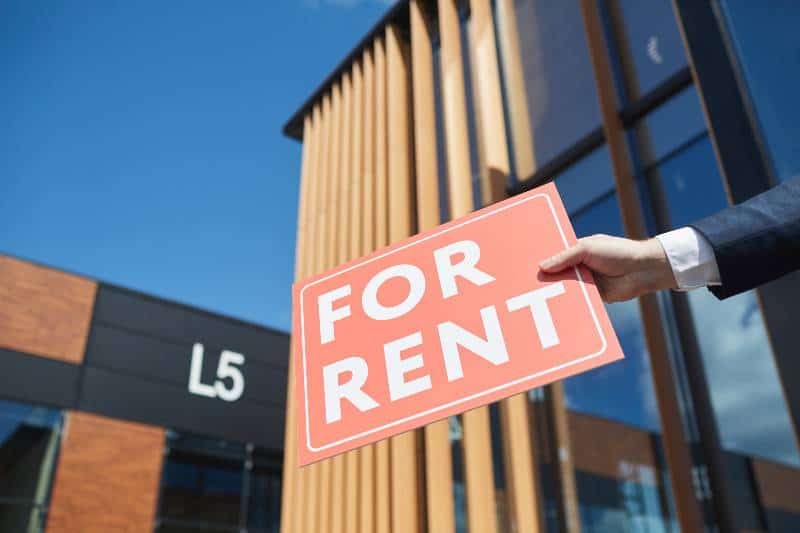Rent control has long been seen as a way to stabilize housing costs in cities prone to rapid gentrification. At its core, rent control is meant to prevent the cost of living from spiraling out of reach for those who call these places home—but what are its longer-term implications? While it’s great for helping families that fall into vulnerable socioeconomic circumstances find safe, affordable housing and remain in their homes, an increasing body of data reveals that rent control might not be so beneficial after all. In this blog post, we’ll take a detailed look at the possible negative effects of renting politically-controlled units over the longer term.
According to Bloomberg, based on the fundamental principles of supply and demand, rent control has the unfortunate consequence of creating housing shortages, thus limiting the accessibility of affordable homes for low-income individuals in urban areas. What’s more, the implementation of rent control tends to escalate the demand for housing in alternate regions, subsequently leading to an increase in rental prices.
Key Takeaways
- Rent control in the commercial sector aims to provide stability for businesses, especially in rapidly developing areas, but it can also lead to reduced incentives for landlords to maintain or improve properties.
- While rent control can offer predictability in overhead costs for businesses, it might limit the availability of commercial spaces and could potentially stagnate certain commercial areas.
- Cities can explore a blend of policies, like offering incentives to landlords, adopting graduated rent systems, or making zoning changes, to address both the needs of commercial tenants and landlords.
Table of Contents

Historical Background of Rent Control
Origins and Evolution of Rent Control Policies
Rent control regulations have a transformative history characterized by their introduction, evolution, and impact around the globe. Originally, these policies were invoked to counteract housing crises spurred by extraordinary circumstances such as wars and pandemics.
The inception of rent control dates back to the First World War, where scarcity of resources and labor led to a severe housing shortage, augmented prices and exploitation by landlords.
Aimed to provide social and economic stability, various governments, starting with the United Kingdom in 1915, implemented rent control policies. Initially, these policies were deemed temporary measures, but their persistence in various jurisdictions talks about their long-lasting relevance amid fluctuating housing market conditions.
Throughout the 20th century, rent control laws were widely adopted as a response to economic hardships and housing inequality. During the Second World War, for instance, the United States adopted a price control policy which included rent restrictions to counter inflation. Over time, these laws have undergone substantial transformations in response to societal needs and changing conceptions regarding housing as a human right.
In the contemporary context, the evolution of rent control policies is marked by a shift towards rent stabilization rather than hard rent caps. Many cities, such as New York and San Francisco, abide by ‘rent stabilization’ measures wherein landlords can usually increase rents a certain percentage annually, maintaining a balance between tenant protection and incentives for property upkeep and investment.
Differences in Residential vs. Commercial Rent Control
When comparing residential and commercial rent control policies, distinct differences arise chiefly attributed to the nature of the stakeholders, the motive behind renting, and the relationship between the tenant and the property.
Residential rent control is widely prevalent and primarily aimed at the protection of tenants from exploitative housing prices and ensuring the affordability of housing. This is done through placing a limit or control on the extent to which rents can be increased within a specified period. These policies also intend to promote stability and affordability for long-term residents in gentrifying areas.
On the other hand, commercial rent control is rather rare and deals with leased property intended for business use. The principles behind commercial rent control are similar to their residential counterparts, i.e., to prevent excessive rent hikes. However, commercial leases are often subject to more extensive negotiation between the tenant and the landlord, and these leases can involve factors like the profits of the business, the desirability of the location, and market demand.
Comparison between the two proves that residential rent control is more common due to the immediate societal need for affordable living spaces. Commercial rent control, though less universal, often surfaces in dialogue when small businesses face displacement due to gentrification. Each set of policies has its unique implications and impacts, underpinning the significance of adaptive policy-making to address specific housing and commercial leasing challenges.
Arguments Against Rent Control in Commercial Real Estate
Rent control policies have long been a subject of debate, with both supporters and critics presenting compelling arguments. In the context of commercial real estate, the following are some key arguments against implementing rent control measures:
Reduced Incentives for Landlords to Maintain or Improve Properties
One critical argument against commercial rent control is the potential reduction in landlords’ motivation to maintain or improve their properties. If rent increases are limited, landlords might be less inclined to invest in regular upkeep, renovation efforts, or necessary upgrades. This hesitation can lead to the deterioration of the commercial property’s value and negatively impact the tenant’s business, customer experience, and even the overall appearance of the commercial district.
Limited Availability of Commercial Spaces
The implementation of rent control in commercial properties may lead to a reduced availability of commercial spaces. Particularly, landlords may prefer converting their properties to other uses that are not subject to such regulations, resulting in fewer lease options for businesses. Additionally, rent control can deter new development projects, as developers might be discouraged by the reduced rate of return on their investments due to capped rents.
Reduced Revenue for City Taxes and Possible Stagnation of Commercial Areas
Lastly, commercial rent control may lead to reduced revenue in city taxes. Since property taxes are often determined by the rental income a commercial property generates, rent control can directly affect the tax revenues collected by local governments. Lower tax revenues might lead to greater budget constraints, hampering the city’s ability to invest in community services, infrastructure, and overall growth.
Moreover, the stagnation of commercial areas might result from strict rent control policies. With a lack of incentive for both new development projects and property maintenance, the overall appeal and vitality of commercial districts can suffer. This decline may discourage the growth of new businesses, diminish opportunities for entrepreneurship, and negatively impact the local economy as a whole.
Although there are strong arguments for implementing rent control in residential real estate, the potential adverse consequences of such measures in the commercial sector cannot be overlooked. Alternative solutions, such as flexible zoning policies or incentives for property owners who offer affordable leases to small businesses, might prove to be more effective in addressing the affordability and accessibility challenges in commercial real estate.
Empirical Evidence and Case Studies
Though less common than residential rent control, commercial rent control programs have been put to test in several cities worldwide as a protection mechanism for small businesses.
New York City, USA
One of the most notable cities that once had commercial rent control is New York City. The city adopted commercial rent control during World War II, just like its residential counterpart. However, this was removed in the early 1960s, partly due to concerns over reduced incentives for landlords to maintain or improve their properties. Currently, the Small Business Jobs Survival Act, which proposes a kind of commercial rent control, remains a point of debate within the city council.
San Francisco, USA
Similarly, San Francisco implemented interim controls limiting rent increases to certain city neighborhoods in 1984. Still, this program only lasted for about 18 months.
Berlin, Germany
Berlin temporarily froze rents for both residential and commercial properties in 2020 due to skyrocketing rent prices, aiming to protect tenants and local businesses. However, the impact of this initiative is yet to be fully analyzed.
The Observed Long-Term Effects on Commercial Real Estate Landscapes
The long-term effects of commercial rent control can be varied, depending on numerous factors such as the given economic context, the specific provisions of the control legislation, and many other socio-economic variables.
Limited Availability of Spaces
A common pattern seen in the aftermath of commercial rent control is a limited availability of commercial spaces. This has often been linked to landlords converting their properties to other uses not subject to rent control, such as residential or mixed-use spaces.
Decrease in Property Maintenance
There have been cases where commercial rent control led to decreased levels of property maintenance, due to lessened financial incentives for landlords to invest in upkeep and improvements.
Negative impact on Commercial Landscapes
In the long run, commercial rent control could have a negative impact on the vibrancy of commercial districts. Reduced investment in property improvements, along with the conversion of commercial spaces to other uses, can lead to a decrease in the vitality and economic opportunities of commercial areas.
In conclusion, while commercial rent control policies have historically been used as a tool to protect small businesses, the evidence demonstrates a complex picture with regard to their long-term effects. The specific characteristics of the controls, as well as other contextual factors of a region’s economy and real estate market, can significantly influence the impacts of these policies. Policymakers must weigh these considerations when crafting commercial rent control regulations.
Read this informative article I wrote about profitable strategies within rent control limits. It provides valuable insights and practical tips to help landlords navigate the challenges and maximize their returns in a rent-controlled environment. Check it out to gain a deeper understanding of this topic and unlock new opportunities in the real estate market.
Alternative Solutions and Policies
While commercial rent control can be an essential tool for protecting tenants, its potential drawbacks require the exploration of alternative solutions and policies for managing commercial real estate landscape. Here are a few potential alternatives:
Incentives for Landlords
The government can establish incentives for landlords to encourage them to offer more affordable leases while simultaneously recognizing their need for financial viability. These incentives can include tax breaks, subsidies, or accessibility to low-interest financing for property upgrades. For instance, if landlords agree to cap rental rates at an affordable level or offer longer lease terms beneficial to small businesses, they would be eligible for these incentives.
Graduated Rent Systems
Under a graduated rent system, the rent is allowed to increase, but at a gradually rising scale. The rental rate might be lower initially, and the increment rate becomes steeper with each passing year. This provides tenants time to build and stabilize their business before confronting steeper rent costs, while landlords can anticipate higher rental incomes over time without imposing high rates abruptly.
Zoning or Planning Interventions
Zoning and planning regulations can play a significant role in controlling commercial rent increases without resorting to strict rent controlled apartment policies. These could include:
- Commercial Zoning: The local government might set apart certain zones specifically for commercial use, which could ensure the sustained availability of commercial space and prevent conversions.
- Mixed-use Zoning: This encourages property developers to include dedicated spaces for local businesses within larger developments, helping to maintain a diverse and vibrant commercial landscape.
- Inclusionary Zoning: This can mandate developers to set aside a proportion of new commercial spaces at below-market rates, thereby promoting affordable commercial leasing options.
- Density Bonus Schemes: Regulations could enable developers to build higher or denser projects in exchange for providing affordable commercial spaces.
While rent control is certainly a part of the conversation, these alternatives could provide more comprehensive solutions, striking a balance between the needs of tenants, landlords, and the local economy. Each option has its unique benefits and trade-offs, highlighting the importance of a tailored, context-specific approach to addressing challenges in the commercial real estate sector.

Long-term Effects of Rent Control FAQs
What are the effects of rent control in New York?
Rent control in New York poses a twofold disadvantage for landlords: they are unable to charge rent based on market value, and making property improvements would result in a double setback.
What are the effects of rent control in California?
If landlords are unable to charge rents based on market rates, they may be disinclined to invest in or maintain rental properties. This could result in a reduced availability of rental properties and a potential deterioration of their quality.
What is the effect of rent control status on eviction filing rates causal evidence from San Francisco?
Compared to the baseline rate of eviction notices over this same time period, the findings suggest that for a given tenant, positive rent control status (i.e., living in a rent-controlled unit) increases the likelihood of eviction by approximately 240% per year.
What is the effect of rent control on new housing supply in a Bay Area case study?
The study found that rent control had a negative effect on the construction of new rental housing housing, reducing it by about 8.1%. This finding suggests that rent control policies can limit the supply of rent controlled properties, contributing to an increase in rental costs.
What are the results of rent controlled buildings in Santa Monica?
A study conducted in Santa Monica revealed that rent controlled units had a negative effect on landlords’ ability to make investments for repair and maintenance of rental properties, resulting in decreased levels of property upkeep. This could lead to an overall decrease in the quality of available rental units.
Conclusion
All in all, rent control can be utilized as a useful tool to benefit businesses within growing areas – however it is essential to weigh the pros and cons of rent control on its own as a policy or measure. The impact it has on both landlords and tenants should considered holistically when analyzing this approach. Ultimately, local governments must explore a variety of solutions for these nuances not only of rent control but tenant-landlord relationships going forward.
For more information on rent control, the potential long-term effects, or ways to find a balance between tenants and landlords, call or schedule a free consultation with me – a real estate professional. With my experience and expertise, I will provide my personal insight into the best path forward for you in your particular situation, I can’t wait to help you out!




